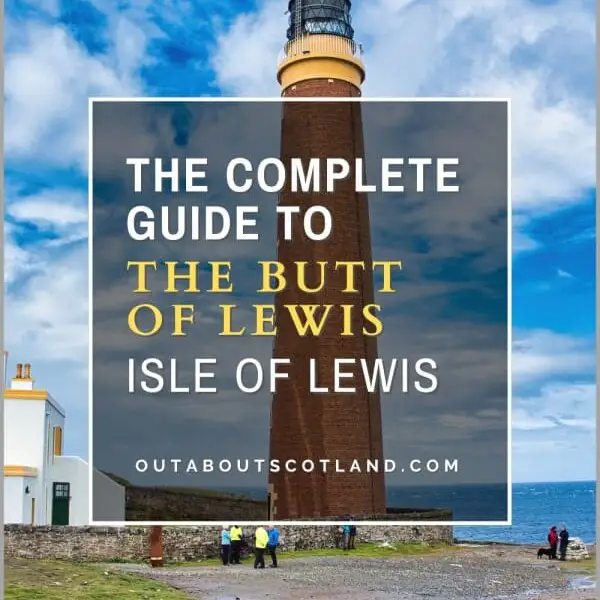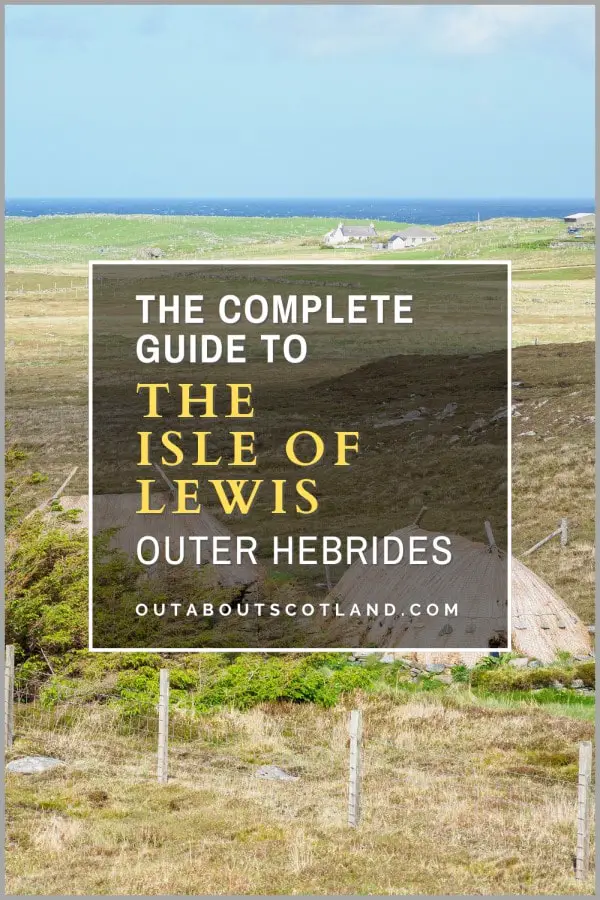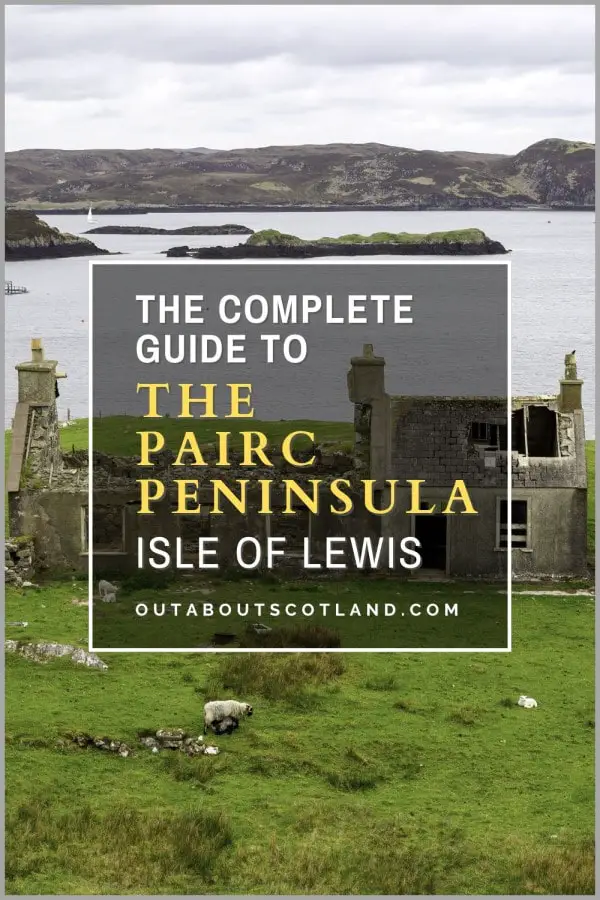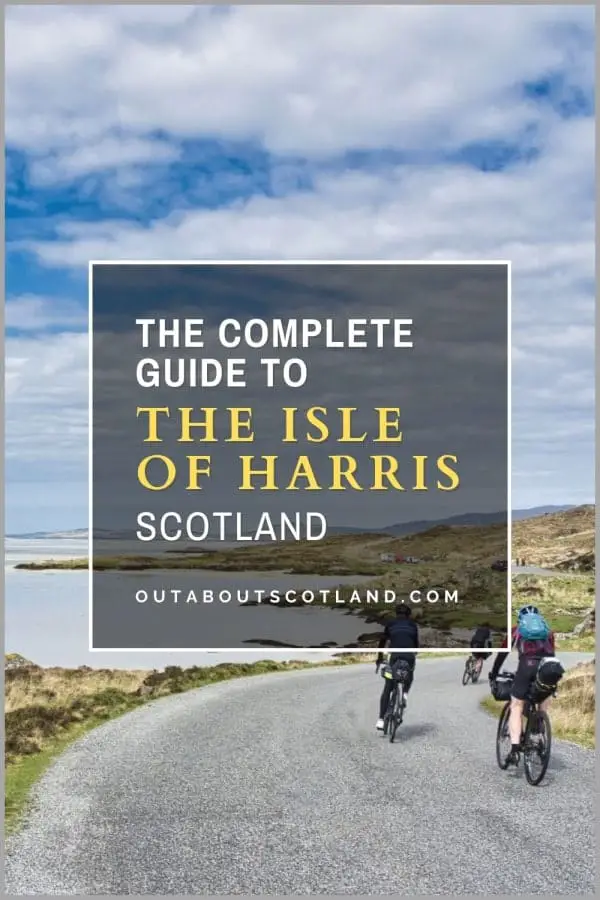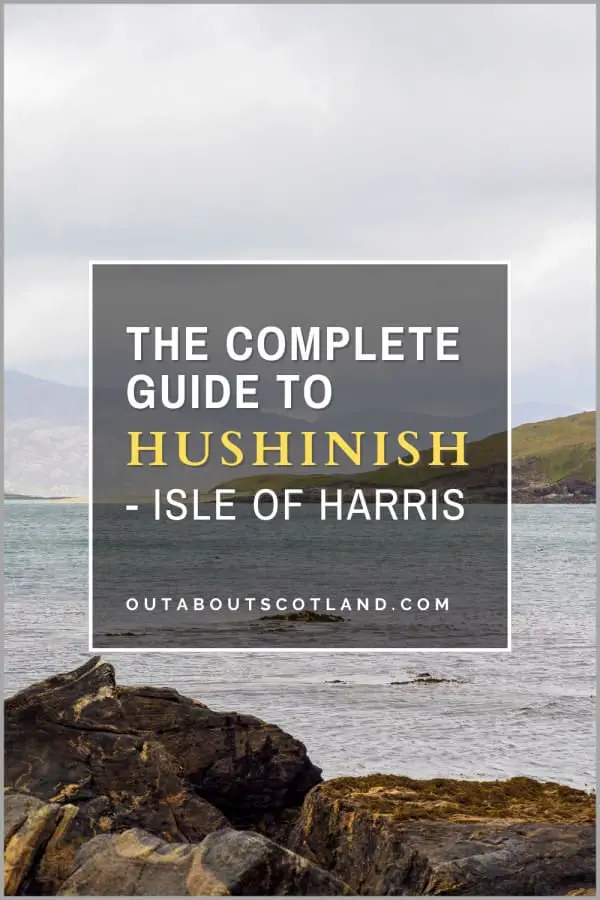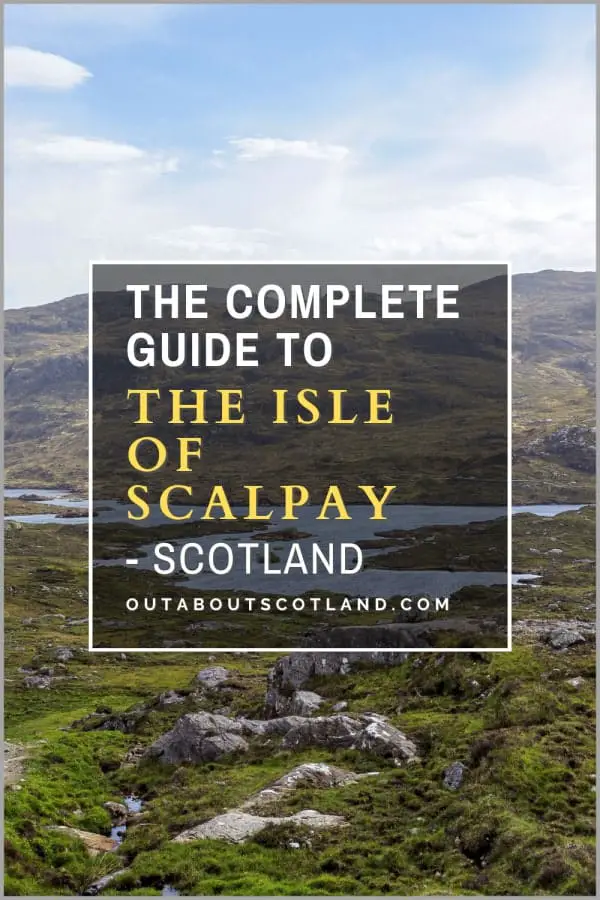The Butt of Lewis is an area on the far-northern tip of the Isle of Lewis in the Outer Hebrides. In addition to being one of the windiest places in Britain, this part of the island is known for being home to the Butt of Lewis lighthouse.
The lighthouse was built in 1862 and is unusual because it has unpainted red brickwork rather than the standard red and white colour scheme. The Butt of Lewis is also a prime wildlife-spotting site as the steep cliffs are a haven for seabirds.
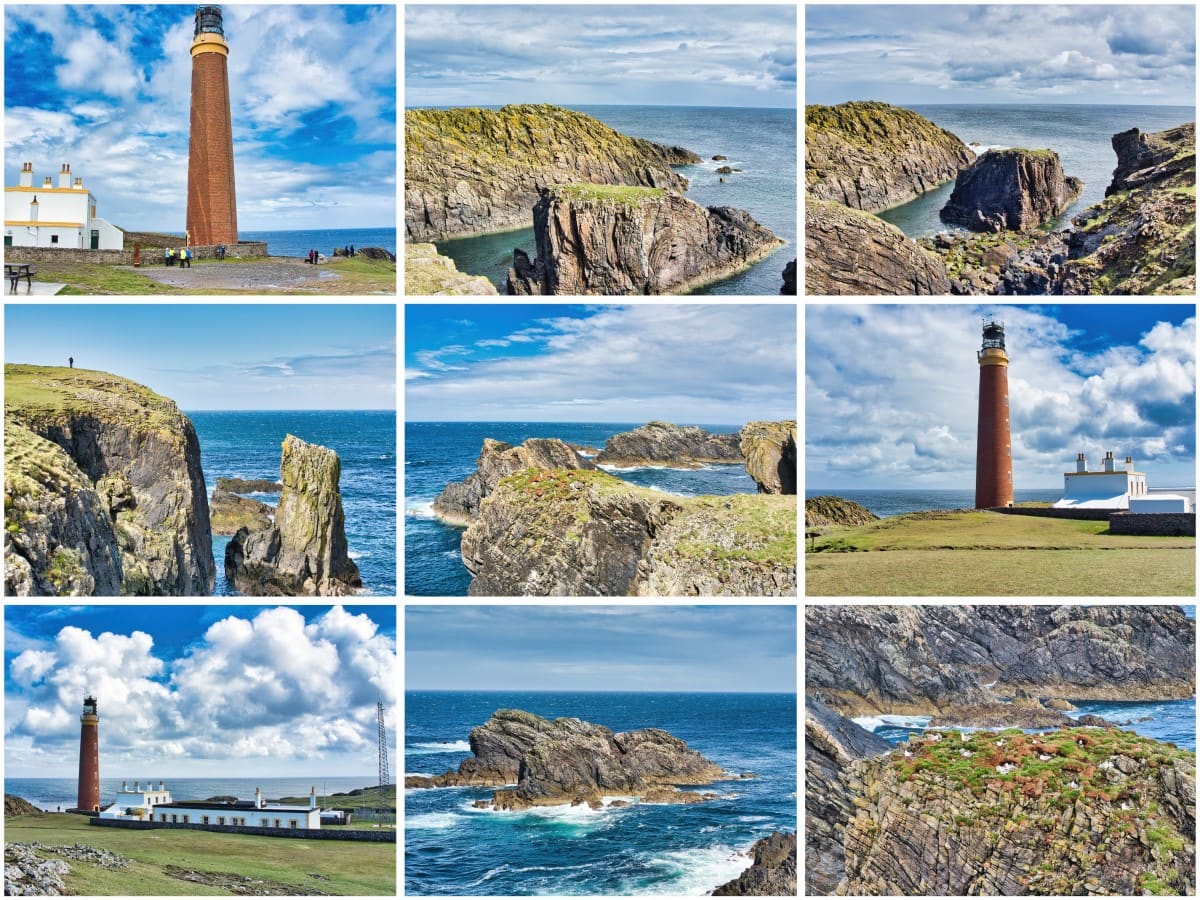
| Address: | Isle of Lewis, HS2 0XH |
| Opening Hours: | 24/7 |
| Admission Price: | Free |
| Parking: | Free on-site car park. |
| Contact: | N/A |
| Facilities: | None. |
| Photos: | Virtual Tour |
Overview
The northern end of the Isle of Lewis in the Western Isles (Scottish Gaelic – Lewis na Heileanan an Iar) tends to draw far fewer tourists than elsewhere, mainly because it’s not exactly a hotbed of attractions. Sure, there are a couple of nice beaches and some good coastal walks, but the majority of the landscape comprises huge swathes of boggy brown marshland that’s rather uninspiring and is incredibly difficult to hike across.
So does that mean you should steer clear of the region in favour of the south where you’ll find the Callanish Standing Stones and Gearrannan Blackhouse Village? I would have to say no, as there are a few surprises waiting on the northern tip of Lewis that just might surprise you.
Eoropie Beach is definitely worth a look for anyone with a love of surf sports and the Dun Eistean sea stack is a must for wildlife watching and clan history, but the high point has to be the Butt of Lewis. This particular point on the island is the most northerly in the Outer Hebrides, with nothing beyond to the north except the Arctic and nothing to the west except North America.
It also has the distinction of being the windiest place in the UK – an honour that has even made its way into the Guinness Book of Records (Amazon link). In addition, the Butt of Lewis is highly regarded amongst Britain’s twitchers as a top spot for watching seabirds due to 80-foot cliffs that are home to petrel, kittiwake, shag, black guillemot and hundreds of gannets, as well as the occasional sea eagle (the largest bird in the UK).
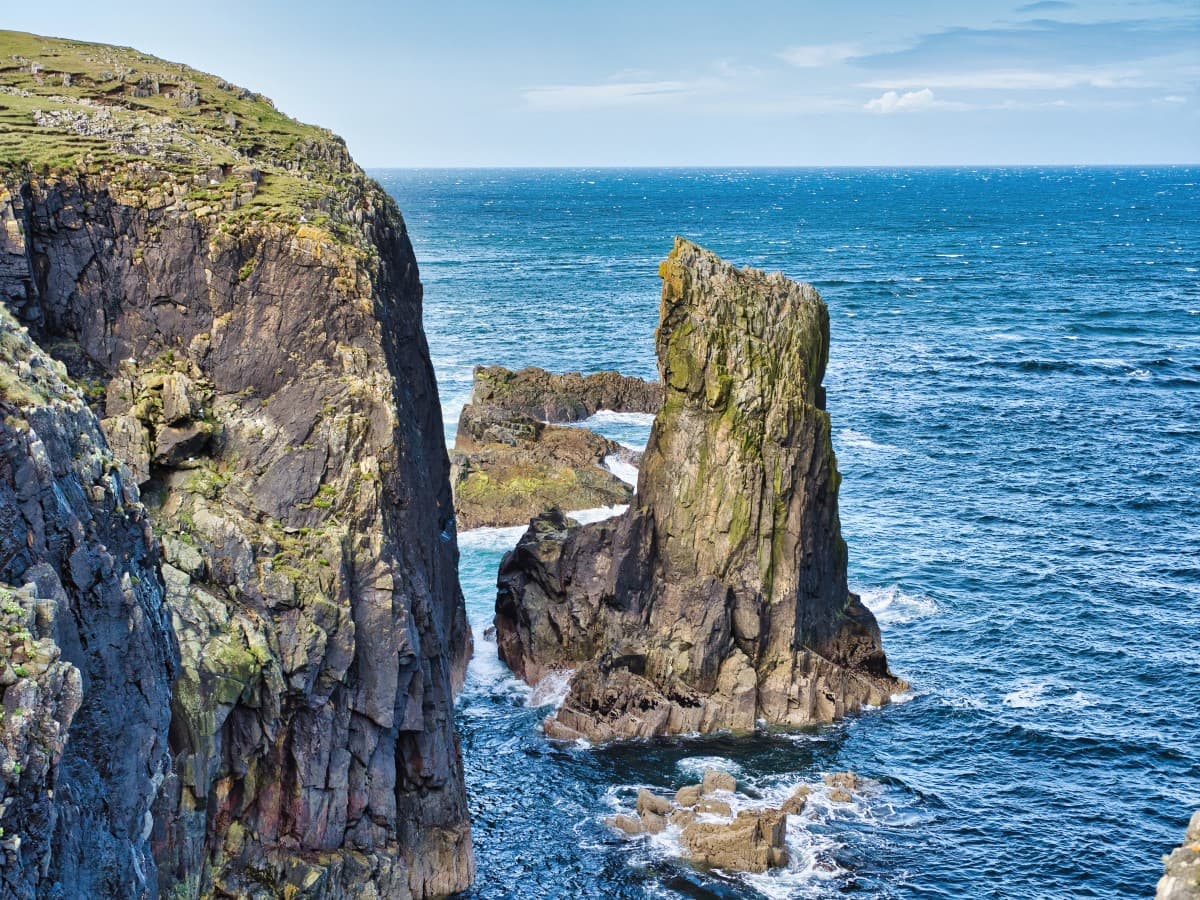
Having braved the elements myself on a ferociously windy day I was surprised by how mesmerising it is to just stand at the top of the cliffs and watch the foaming waves crash onto the rocks below. Sea stacks pepper the coastline in both directions and the sky overhead is filled with a squawking cacophony of birds battling against the wind – and what a wind!
I visited in May and the weather forecast warned of 50mph gusts all day, though apparently that’s nothing as gusts of 160mph have been recorded in the past. That’s blowing a hoolie, and then some.
Aside from the wind speed, this part of the island is worth visiting to take a few snaps of the Butt of Lewis lighthouse that stands guard perilously close to the cliff edge.
Built between 1859 and 1862 by David and Thomas Stevenson (who built many of Scotland’s lighthouses), the Butt of Lewis lighthouse stands 121 feet high and is notable because it was constructed from red brick that was never painted. This is in contrast to almost every other lighthouse in Scotland which is either white or white with red stripes, and I have to say it looks all the better for its unpainted appearance.
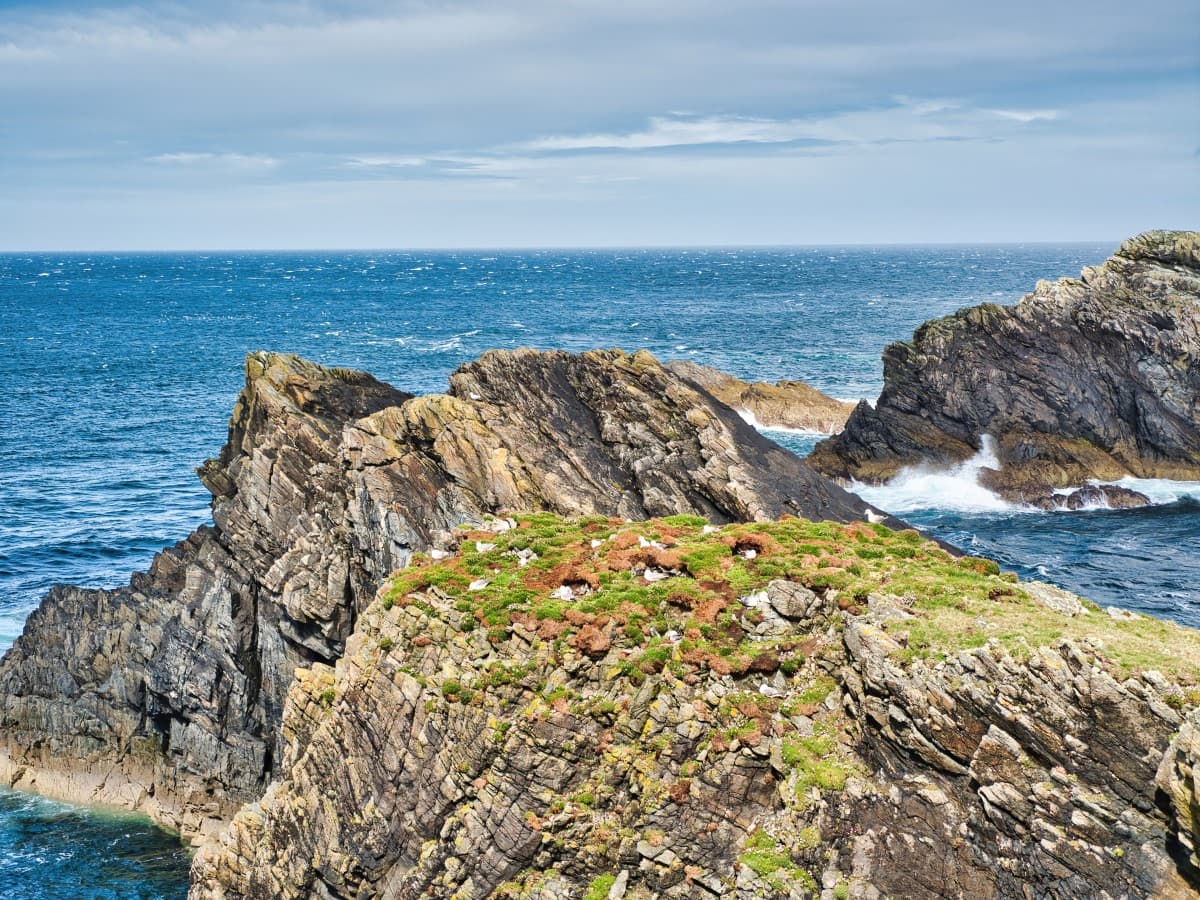
The Highlights
1: Although you can’t enter the lighthouse station it makes a stunning sight against the dramatic cliffs that tower over the crashing waves below. The cliffs are a haven for seabirds so I recommend taking a pair of binoculars (see my recommended optics).
2: There’s a lovely walk along the clifftops heading south from the lighthouse to Eoropie Beach that is highly recommended. If you’d rather not walk there’s a car park at Eoropie Dunes Park (postcode HS2 0HX).
3: If nothing else, being able to say you’ve visited the windiest place in the UK is something that’s worth adding to any Scotland sightseeing itinerary.
Visiting Tips
1: This is an exceptionally remote area so naturally, facilities are next to non-existent. If you’re visiting for the day you will have to bring food and water with you.
2: As is to be expected for one of the windiest places in Britain, the weather can change at the drop of a hat. During my visit, I experienced a continual change in weather from blazing sunshine to dreary clouds. My advice for clothing is to pack waterproof layers that are easily removed.
3: Following on from the above, the wind can be very, very strong so if you’re intending to go on a cliff-top walk keep dogs on a lead and children under close supervision. Some of the cliffs around the Butt of Lewis are up to 80 feet in height and the wind speeds often reach 50mph.
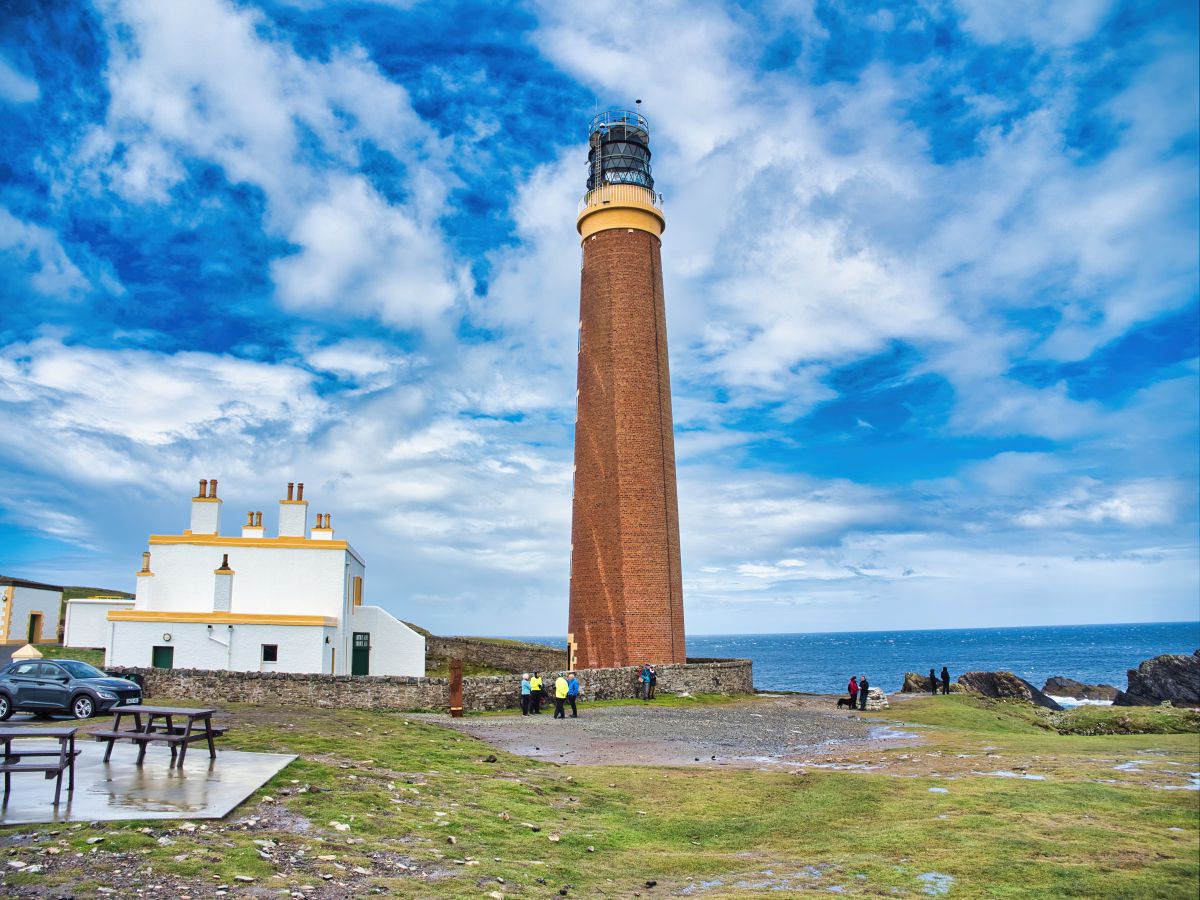
Tourist Information
Apart from being able to say you’ve been to what is officially the windiest place in Britain, this is the final destination of the Hebridean Way so if you’re intending to walk or cycle the 185-mile route you have no option but to end up at the Butt of Lewis one way or another.
The approach roads are tarmac and in good condition and they’re almost entirely flat so the last stretch of the monumental journey should be easy – as long as the winds aren’t too strong. If they are you’ll be in for a battle as the surrounding landscape is featureless and low-lying with nothing to break up the landscape.
Although the A857 veers close to those dramatic cliffs it’s far enough away that you’ll never see them until reaching the lighthouse. Speaking of, although the lighthouse is an interesting structure it’s still in use which means access is forbidden to the general public.
You can walk around the exterior walls of the lighthouse station though, and from there you can join a rough track that heads south along the clifftop to Eoropie Beach. This is a lovely beach with clean sand and impeccably clean sea, plus it has a great children’s play park on the road leading to it that’s guaranteed to keep youngsters entertained for at least an hour while you enjoy the peace and quiet of the nearby dunes.
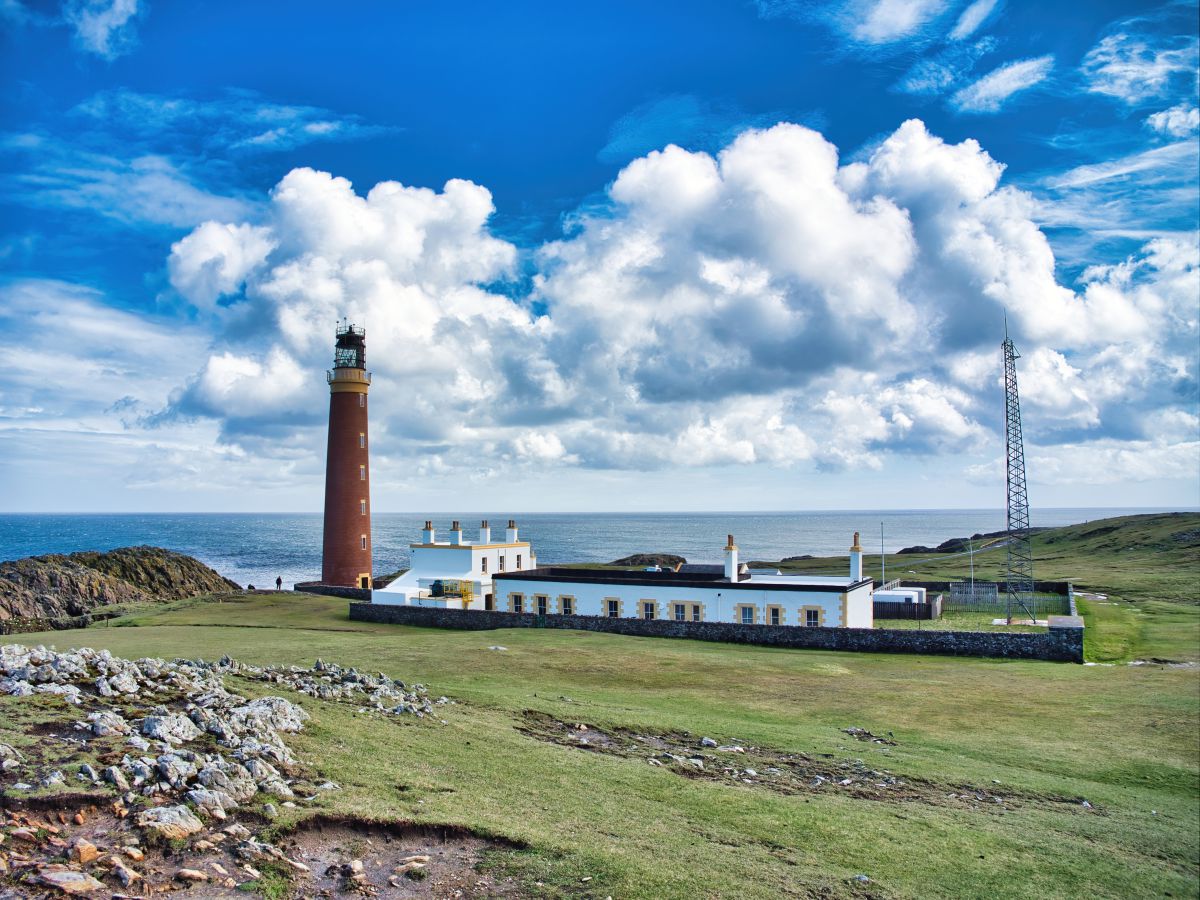
There’s another coastal path heading west from the Butt of Lewis that winds its way to Dun Eistean sea stack – the ancestral stronghold of Clan Morrison – after which it’s another mile to Port Ness where you’ll find an attractive harbour and a cafe.
From the lighthouse, keep an eye out for Port Stoth which is a small enclosed natural harbour that was used to bring in the bricks and building materials for the lighthouse. The steep surrounding rocks form a barrier against the elements so if you need to take a break from the weather it’s a good place to stop at.
One point that’s worth making about either of the walks along the coast is that the winds can gust with no warning so it’s essential to keep a safe distance from the cliff edges. The structure of the rocks (amongst the oldest in Europe) means the drops are sheer and the sandy tops are loose – not a good combination with excitable kids and animals running about.
As far as facilities go, the Butt of Lewis basically doesn’t have any apart from a small car park, so taking your own food and drink is essential. The nearest shop I found is located 3.5 miles away in Swainbost which is part of a petrol station and has the usual snacks and basic essentials. Seach for postcode HS2 0TA to find it.
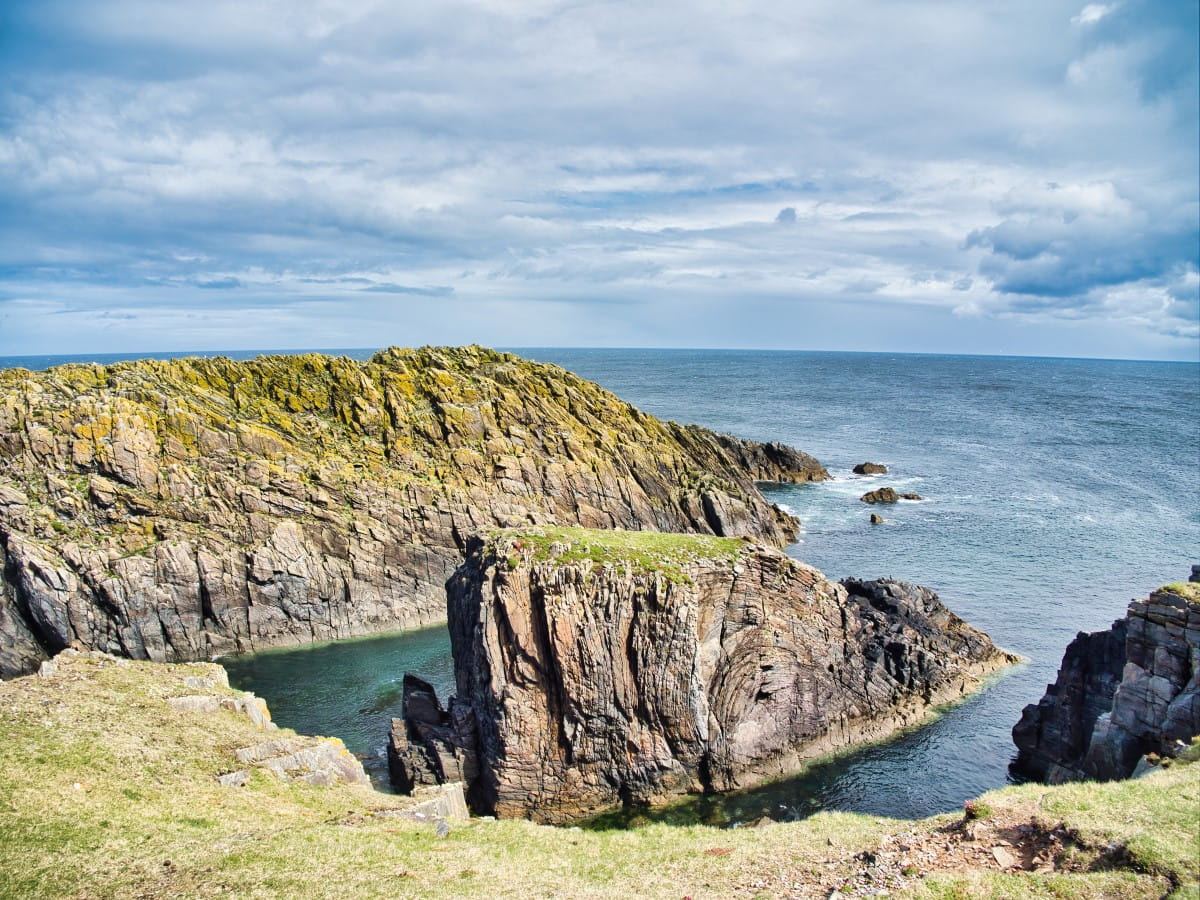
Things to Do
See the Butt of Lewis Lighthouse: This remarkable red brick lighthouse, designed by David Stevenson in 1862, is a must-see. It’s perched on the edge of a cliff and offers stunning views of the Atlantic Ocean so you’re guaranteed some fantastic photos during your visit.
Explore the Port of Ness: Just a short drive from the Butt of Lewis, you’ll find the charming village of Port of Ness. With its pretty harbour and secluded beach, it’s a great place to spend an afternoon.
Visit Eoropie Dunes Park: This beautiful park features a play area, picnic tables, and walking paths among sand dunes that open up onto the white sands of Eoropie Beach. It’s a perfect spot for a family outing or perhaps just visiting with a picnic.
Discover the ancient St Moluag’s Church: This historic church dates back to the 12th century and is believed to have foundations that were laid as far back as the 6th century. The church is still used for services today, but as there’s no electricity the congregation has to make do with candles!
Enjoy Birdwatching: The Butt of Lewis is a haven for various bird species. Get your binoculars ready (link to binocular reviews) and see if you can spot fulmars, kittiwakes, or guillemots. During summer, you might even see puffins making their nests.
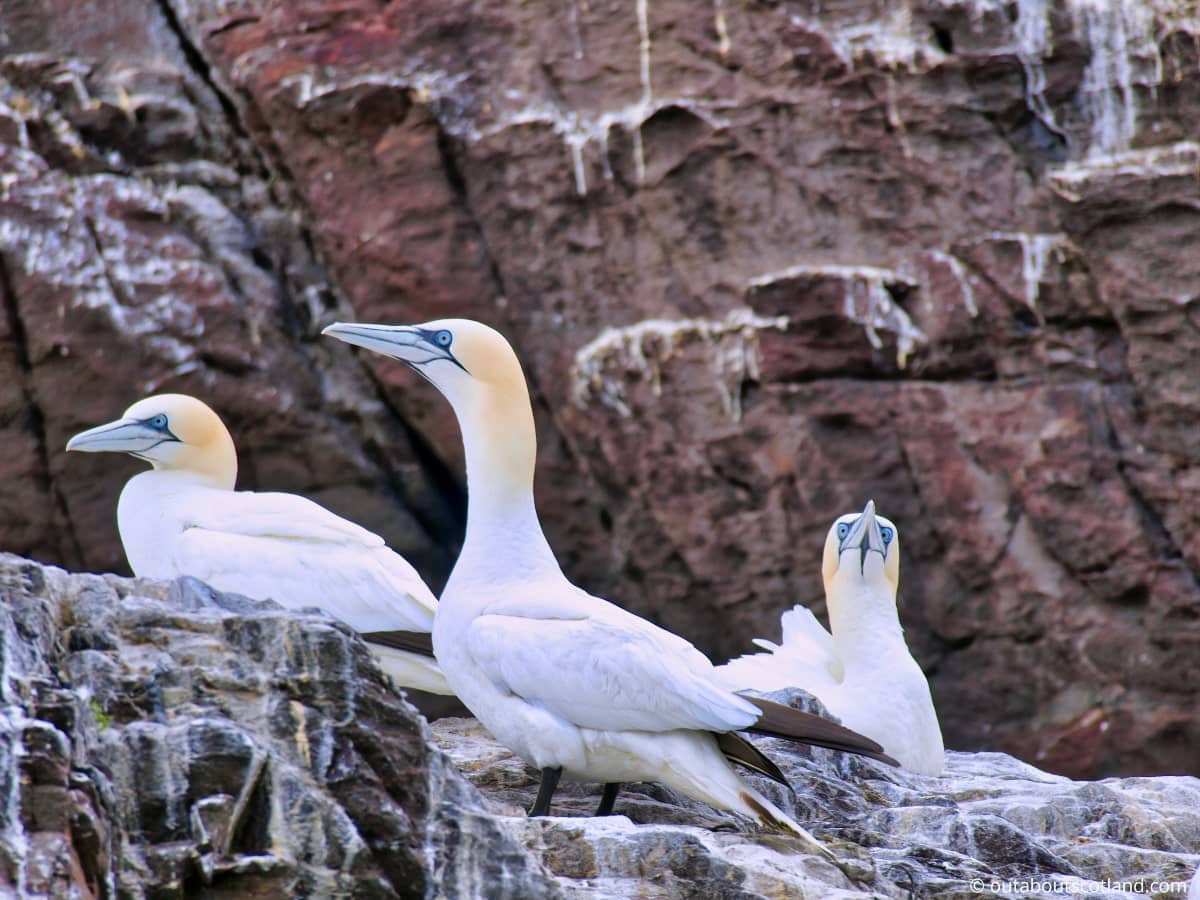
Things to Do Nearby
Eoropie Beach. Address: Ness, Isle of Lewis HS2 0XH. Distance: 1.5 miles.
A small and secluded white sand beach that’s a good spot for windsurfing.
Ness Beach. Address: Isle of Lewis, HS2 0XA. Distance: 3 miles.
A white sand beach located next to a traditional fishing harbour. Ness Beach is well known for its clear waters and quiet location. A small cafe (one of the few in the area) is located near the harbour.
Port Stoth. Address: Butt of Lewis, Isle of Lewis. Distance: 0.4 miles.
A sheltered sand cove a few minutes walk from the Butt of Lewis lighthouse. The cove is a popular location for seal spotting and the surrounding cliffs are a good place for sea fishing.
Dùn Èistean. Address: Isle of Lewis, HS2 0XF. Distance: 2 miles.
A historic sea stack that was once home to Clan Morrison. The remains of an Iron Age fort can be found on top of it alongside medieval ruins. Today, it is accessed via a suspension bridge and is a good place for bird spotting.
Loch Stiapabhat Local Nature Reserve. Address: Isle of Lewis, HS2 0XF. Distance: 2 miles.
A large, shallow loch that is a haven for flora and fauna. The loch is used by several bird species during their flights to and from the Arctic including whooper swans, pink-footed geese, and teals.
Frequently Asked Questions
Can you walk around the Butt of Lewis?
It’s possible to follow a rough coastal path along clifftops to the Butt of Lewis starting from the Eoropie Dunes car park. The route arrives at the Butt of Lewis lighthouse before returning via a tarmac road. Visit Walk Highlands for the complete route.
What is a butt in Scotland?
A ‘butt’ in the Scots language is defined by Dictionaries of the Scots Language as “A small piece of ground disjoined, in whatever manner, from the adjacent lands. In this sense, a small parcel of land is often called, the butts”.
How many lighthouses are in Scotland?
There are 207 working lighthouses across Scotland all of which are managed and maintained by the Northern Lighthouse Board.
Who built the lighthouse at Butt of Lewis?
David Stevenson built the Butt of Lewis lighthouse in 1862. The 121-foot red-brick tower is unpainted which is unusual for a Scottish lighthouse. The light has a range of 25 nautical miles.
What language do they speak in Lewis?
The main language spoken on the Isle of Lewis is Scottish Gaelic, which is a Celtic language that has been spoken in the region for centuries. It is also common for people on the Isle of Lewis to speak English, as it is the official language of Scotland and is widely spoken throughout the country.
Are the Outer Hebrides part of Scotland?
Yes, the Outer Hebrides are a group of islands located off the northwest coast of Scotland. They are part of the Western Isles council area which is one of the 32 council areas of Scotland. The Outer Hebrides include a number of islands, including Lewis and Harris, North Uist, Benbecula, South Uist, and Barra.

